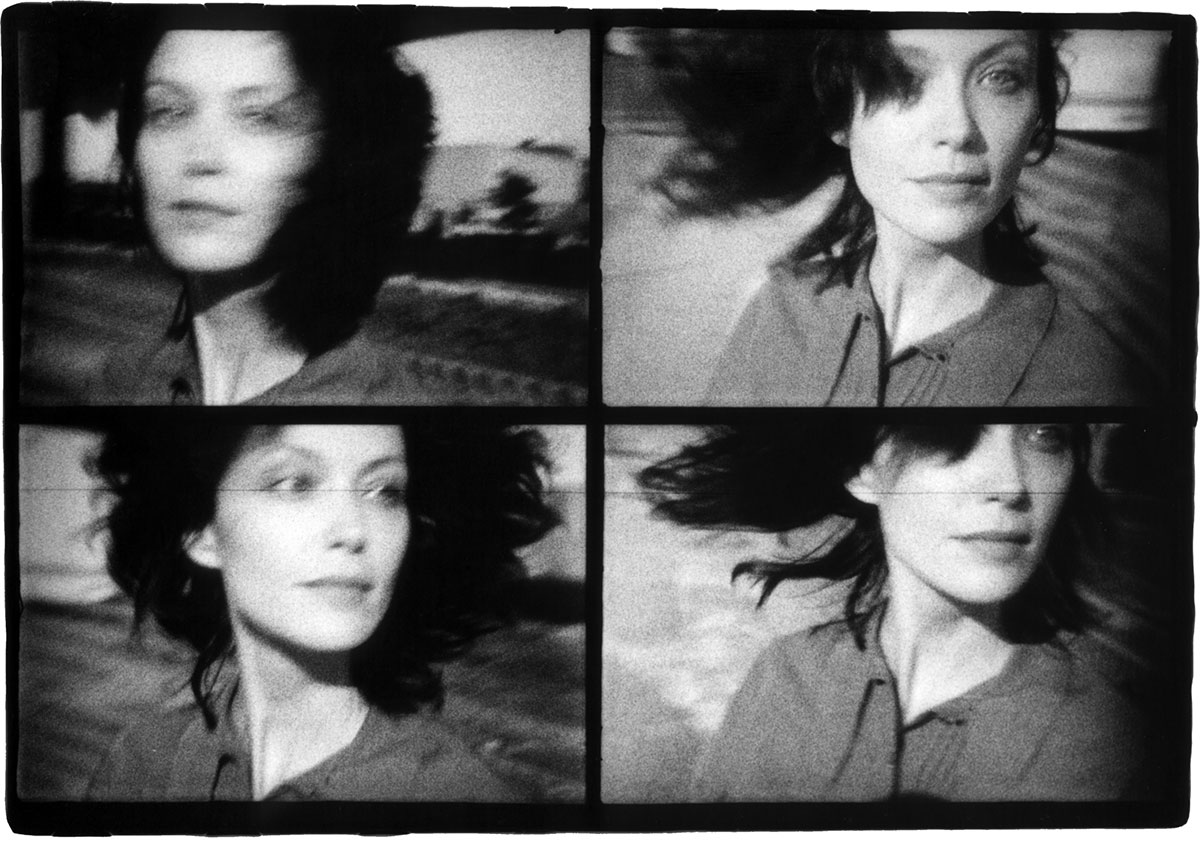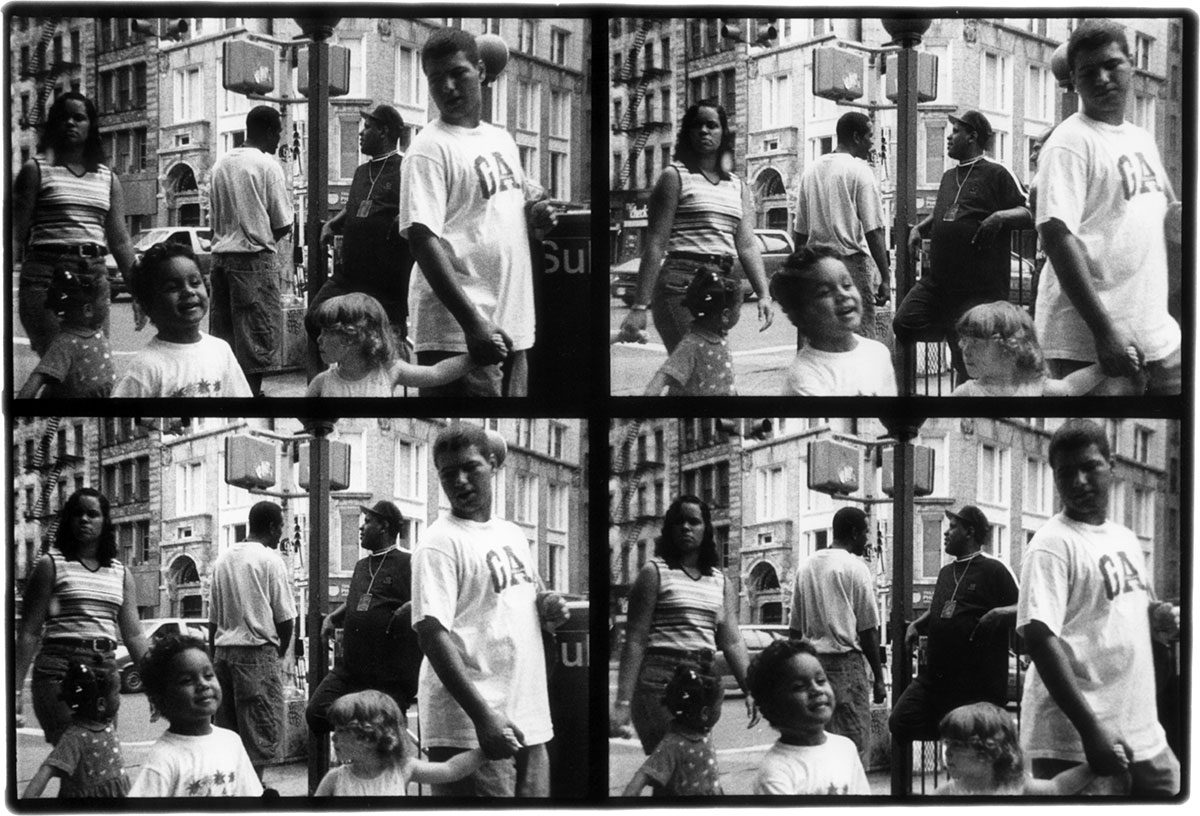
Greg Holman found his artistic calling in the most unlikely of places. While accompanying a friend to a Yonge Street card shop in the summer of 1996, Holman spotted a Sports Action camera. Marketed mainly to golfers wanting to examine their swing, the Sports Action was a novelty camera with the look and feel of a cheap disposable, save for one difference: instead of one lens, it had four. Coloured yellow, purple, red, and blue, and formed in a square, the camera shot four pictures on a single 35-mm frame in quick succession. Best of all, the camera was not disposable, but reusable. Holman, then a professional photographer for some fifteen years, was intrigued and bought one, shooting off a roll on his way down Yonge that same afternoon. He quickly processed the film, the results of which forever changed his work.
Holman found the photos had almost a film noir feel: grainy, blurred, and often inexplicably scratched. With no speed or focus control, the quality of each camera also varied. “The irony is I have professional training, but if I were to do this on purpose, the images would look contrived,” Holman says. “I don’t retouch the photos at all because there’s so much in there. It’s all part of it. I do like the poor quality lens because it gives it a nineteen-twenties feel. That’s magic to me.”
While the subjects of his first roll were shot candidly, Holman soon learned the camera also leant its magic to portraits. The best example of this in Holman’s portfolio is a photo of film star Anne Bancroft, who Holman met on a movie set earlier this year. Within the one to one-and-a-half seconds of frame, Bancroft can literally be seen warming up to the camera. She acts young and playful as she spins in a circle holding her shawl over her shoulders. “As soon as she found out it recorded motion, she opened up. Actors like it because it’s like film—it gets them going. A Nikon lens is disarming to people. If you pull this out, people don’t even think about it.”
Unfortunately, the camera’s plastic parts broke easily, leading to its quick discontinuation. Holman called a number of stores and several golf courses, buying up every Sports Action camera he could find, including a stash of fifty purchased directly from the manufacturer, and now shoots about half of his non-commercial work with the Sports Action.
A High Park resident who works out of the Studio District on Toronto’s east side, Holman eventually plans to hold a showing of his Sports Action photography in New York City.


